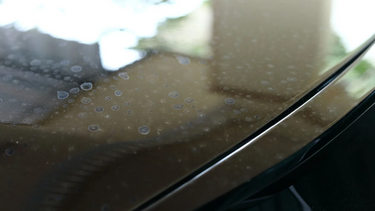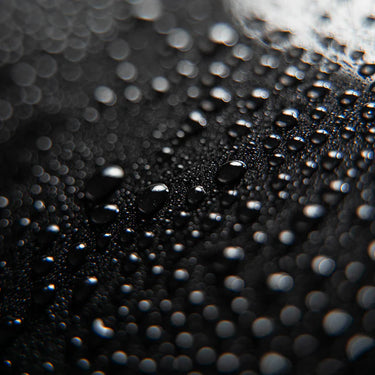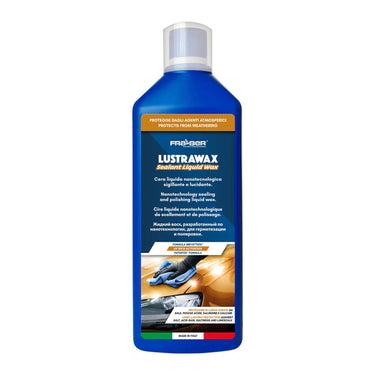
What is Limescale?
Ever heard of the term limescale? It's a lot simpler than what it sounds. Limescale is the chalky-white or yellow spots on the surface of your car, caused by water deposits drying on the surface. These deposits usually occur on the bodywork, windows and mirrors of a vehicle. Not only does it diminish your car’s appearance, but it can also cause long-term damage to the paintwork and other surfaces if left untreated.
What Causes Limescale on Cars?
Limescale usually occurs after it rains or when water droplets with high levels of calcium and magnesium evaporate on the surface of a car leaving white/yellow mineral spots/streaks. Limescale can also occur when not drying a car properly after washing a car and not drying it properly and when parking near sprinklers or areas where water constantly splashes onto the vehicle.

Why Is Limescale Bad for Your Car?
The Effects of Limescale on a Car:
1.Corrsion:
If left untreated, the mineral deposits may corrode into the surface of the paint, glass or plastic trims, making them harder to remove and could cause permanent damage to the surface of your car.
2. Diminish Appearance:
Limescale left untreated can make the overall appearance of your car look dull and dirty, even after washing.
3. Reduce Visibility:
Limescale buildup on windows or mirrors may cause a decrease in visibility, especially in bright sunlight and at night when other car's lights shine on them. This may become dangerous for the driver and even the passengers.

How to Remove Limescale from Your Car
In order to remove limescale you would need a combination of the right products with the proper techniques.
Here’s a step-by-step guide on how to effectively remove limescale:
Step 1. Wash Your Car First
The first step requires washing your car using a pH-balanced car shampoo, like S2 Foamy by Innovacar. This will decontaminate the car and remove surface dirt, grime, and other contaminants, allowing you to better focus on the areas with limescale.
Step 2. Use a Vinegar Solution
If you do not want to or can't afford to use a chemical limescale remover, use a mixture of white vinegar and water. It is a natural, effective and safe method for removing limescale from your car's exterior and windows. The acidity in vinegar helps dissolve the calcium deposits. The following is the composition and how to use the vinegar solution:
- Composition: 1 to 1 > Add 1 part white vinegar with 1 part water in a spray bottle. - Spray the solution on affected areas: Lightly spray the solution onto areas with limescale buildup.
- Let the solution sit: Allow the solution to absorb properly on the surface for between 5-10 minutes to allow it to break down the mineral deposits.
- Wipe away: Use a microfiber cloth to gently rub and remove the dissolved limescale. Rinse thoroughly with water afterwards.
Step 3: Use a Chemical Limescale Remover
We would recommend doing this instead of the vinegar solution. However, your decision can be different if you prefer the vinegar solution or are not in the position to purchase a chemical limescale remover product.
Apply the product as indicated on the product packaging with the aid of an applicator or micrfibre cloth and gently rub the product onto the affected area. Rinse and dry the treated area after application. We would suggest limescale removers like 100% Scale by Innovacar, Act by Fra-Ber or Reef by Fra-Ber for watercrafts.
Step 4: Polish for Stubborn Limescale Buildup
When the limescale has been left untreated for a long time and is already corroded deeply into the paint or glass, you may need to polish the surface.
-Use a non-abrasive polish (ServFaces Ultra Fine Polish): Apply a fine polish using a polishing pad or microfiber cloth. This will help remove stubborn spots while restoring shine to the surface.
- Buff carefully: Use a buffing towel (Micron Buffing) to carefully wipe away and shine the surface. Do not use too much pressure to avoid scratches.
Step 5: Apply a Sealant or Wax
Once the surface is cleaned and the limescale is removed, it is recommended to apply a layer of wax or sealant on the car’s surface. This creates a hydrophobic (water-repellent) barrier to reduce the risk of further limescale on the car. We would suggest using Lustradry.

Preventing Limescale in the Future
While it’s difficult to avoid water and rain entirely, you can take steps to minimize the effects of limescale buildup. Use the following methods to help prevent the effects of limescale:
- Dry Your Car Immediately: After washing your car, use a clean drying towel (Micron XXL) to dry all the surfaces immediately. This includes the bodywork, mirrors, windows and plastic/carbon fiber trimmings.
- Use Filtered Water: If possible, wash your car with filtered or softened water, which has fewer minerals than rain and regular water.
- Apply a Protective Coating, Wax or Sealant: Regularly apply a coating, wax or sealant to protect your car’s paint and make it easier to remove future water spots and limescale.
- Avoid Parking Near Sprinklers: Sometimes you may not have a choice but if you can, try to avoid parking near sprinklers or where you can see people using a hosepipe.

Conclusion
Limescale is an annoying but fixable and manageable issue for car owners, especially in areas with high rainfall. However, by understanding what causes limescale and how to remove it, can keep your car’s paint, mirrors and windows looking pristine. Regular cleaning, along with preventive measures like waxing, will go a long way in protecting your vehicle from long-term damage caused by limescale mineral deposits.













